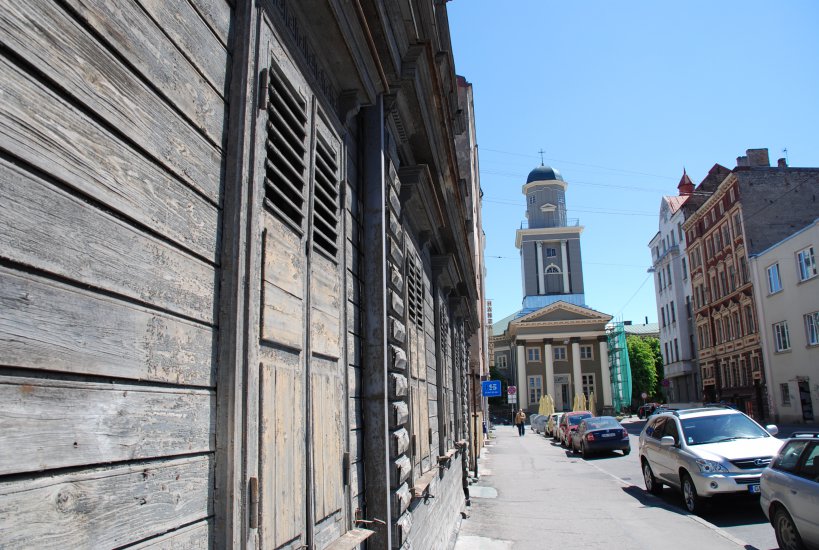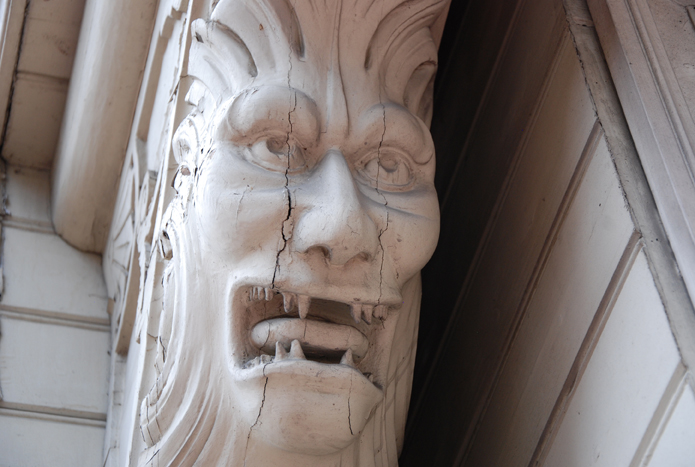GETTING THERE
The best way to get to Pārdaugava is either to walk across the Vanšu or Akmens bridges or to take trams, especially during rush hour. For the Railway Museum, Soviet Victory Monument, Arcadia Park, the Monument to the Repressed and the Riga Luther Church take tram N°10. For the Āgenskalns Market take tram N°2, but for many of the area's best restaurants and bars as well as the Kalnciema kvartāls and the Botanical Gardens take tram N°1 or 5.
SIGHTS
Āgenskalns Market (Āgenskalna tirgus)
Although construction of Riga’s third largest market began in 1911, due to WWI it wasn’t completed until 1923. Since then this red brick building has become the focal point of the local community. It’s home to numerous stalls selling anything from pork and poultry to dairy products and fresh vegetables. Unfortunately, the years have not been kind to this historic landmark and a general feeling of depression seems to reside in its halls. Take the stairs to the second floor for great views of the bustle below and cheap food and drink at the café. Nometņu 64.
Āgenskalns Water Tower (Āgenskalna ūdenstornis)
This stunning water tower dating from 1910 was the brainchild of prolific architect Wilhelm Bockslaff. Riga was experiencing a golden age of construction and development at the time, so it was created, not surprisingly, to provide fresh drinking water to an exploding population. The impressive structure rises to a height of 40m and has 2m-thick brick walls, as well as a stylised version of Riga’s coat of arms above the entrance. It was also used as an underground recording studio called ‘Tornis’ from 1991 - 2010. Alīses 4.
Arcadia Park (Arkādijas Parks)
Created at the turn of the 19th and 20th centuries, this pleasant park is divided by the meandering Mārupīte river which was diverted for the project. A restaurant building and an amphitheatre were part of the original park but were burned down over the years by vandals and never restored. Today, you can follow the course of the river and feed ducks from its banks or take in the view from the top of the hill. Take tram N°10 from Grēcinieku to the Arkādijas parks stop. Between O. Vācieša and F. Brīvzemnieka.
Castle of Light - National Library (Gaismas pils - Nacionālā bibliotēka)
The Latvian National Library is the brainchild of American-Latvian architect Gunnar Birkerts, who is perhaps best known for his creations in the United States which include the Corning Museum of Glass in New York State and the Law Library Building at the University of Michigan. Its shape is a symbolic expression of the Hill of Glass and the Castle of Light found in Latvian folklore. Legend has it that the Castle of Light sank into an ancient lake and would only arise from the depths when Latvians were once again masters of their own land. The building is finally open to the public and it hosts a variety of exhibitions and events. Mūkusalas 3.
Ķīpsala Beach (summer only)
You can cool off in the River Daugava right in the centre of Riga. Just walk, cycle or take a bus across the Vanšu Bridge to the Left Bank and you’ll see a proper beach on the right side. Changing cabins are available as well as two portable toilets (hidden behind some bushes near the highway) and even a beach volleyball court. Unlike nearby Baltic Sea beaches, you don’t have to walk half a kilometre to get wet. Just dive right in! Balasta dambis.
Holy Trinity Church of Pārdaugava (Sv. Trijādības baznīca)
Although an older church dating back to 1453 once stood here, the current 17th-century Russian baroque-style building was completed in 1893. Designed in the shape of the Orthodox cross, its soaring belfry and blue and green onion domes can be seen from quite a distance. Inside you’ll find the smell of incense and hundreds of icons common to Orthodox churches. Meža 2.
Latvian Railway Museum (Latvijas dzelzceļa muzejs)
Retrace the tracks of rail history in Latvia in this museum run by Latvian Railways (Latvijas dzelzceļš). Inside the brick hangar you’ll find old photographs, antiquated machines and a few specimens of old wagons. Outside you can look at restored Soviet diesel and electric locomotives built in Ukraine and Russia as well as a German locomotive built in 1942 that no doubt became a spoil of war. Don’t miss the Tsarist era prison car. Uzvaras 2/4.
Monument to the Repressed
During the Soviet occupation of Latvia, tens of thousands of men, women and children were ripped from their homes and sent to Siberia as slave labour. The most infamous dates for deportation are June 13 - 14, 1941 and March 25, 1949, when roughly 15,000 and 42,000 people, respectively, were abducted in the middle of the night. They were ordered to pack warm clothes, were driven to train stations and were crammed into cattle cars for the long trip to destinations unknown. Few ever returned. A monument has been erected in memory of these people at the station from which many began their horrible journey. Take tram N°10 from Grēcinieku to the Torņakalna stacija stop. The monument is directly behind the station. Torņakalns train station.







